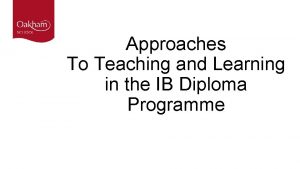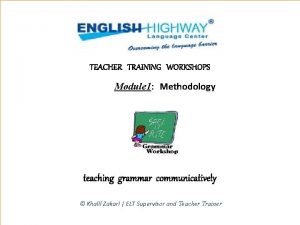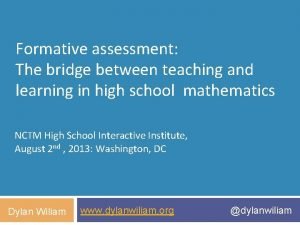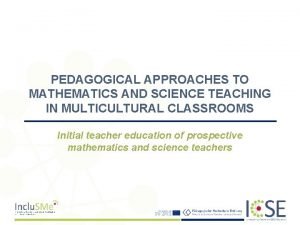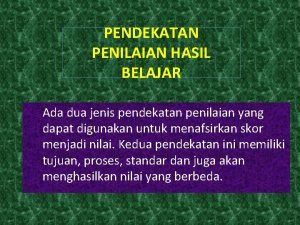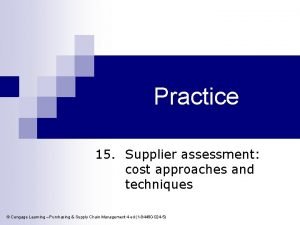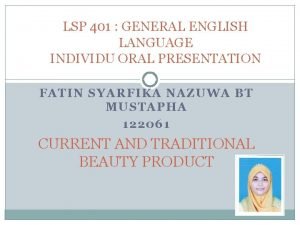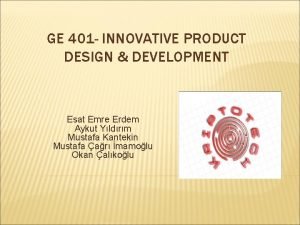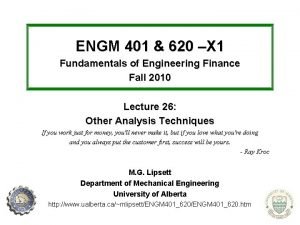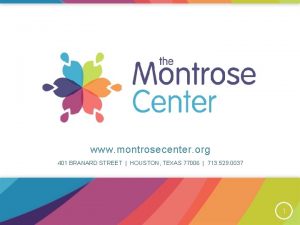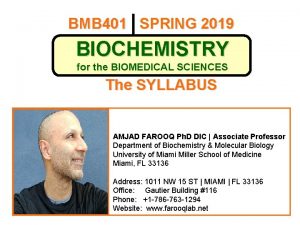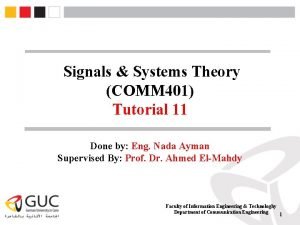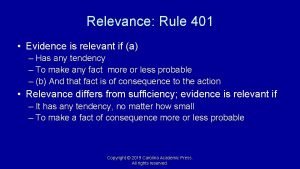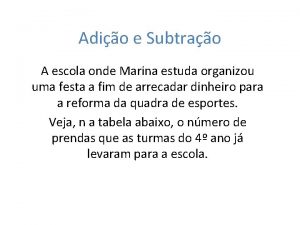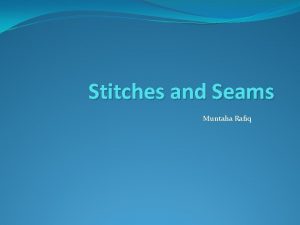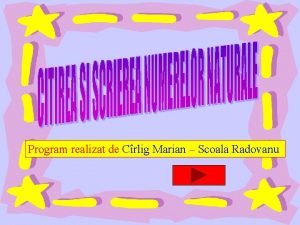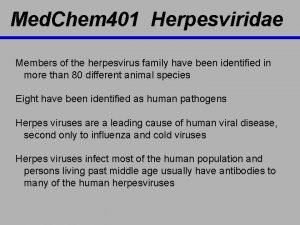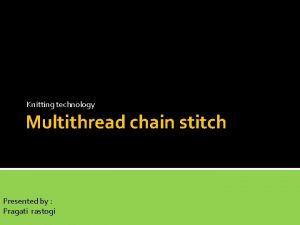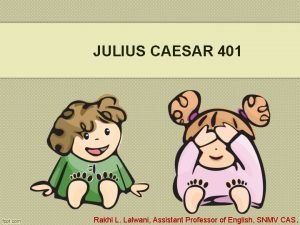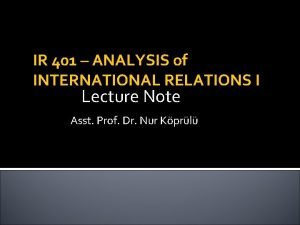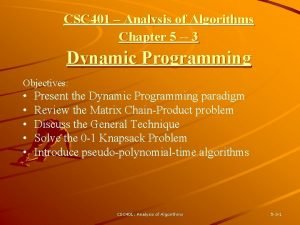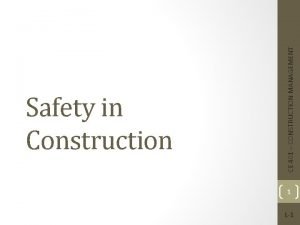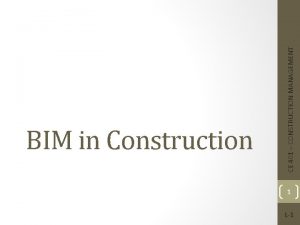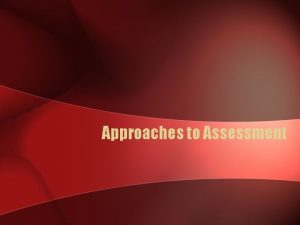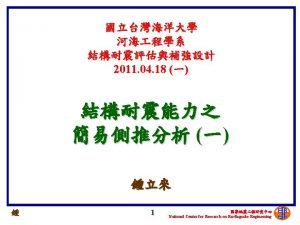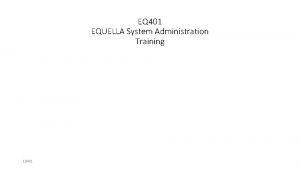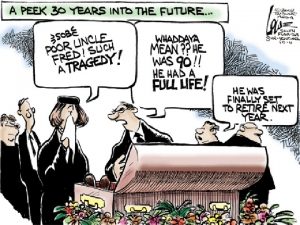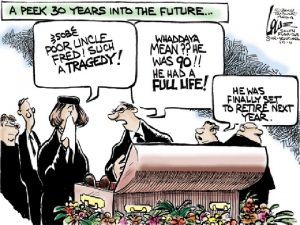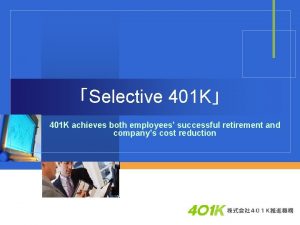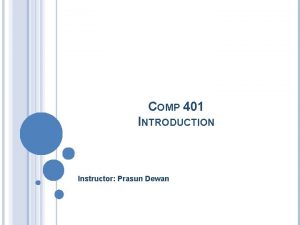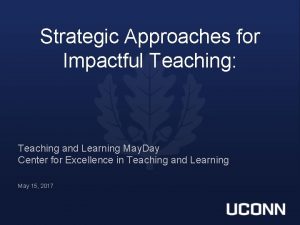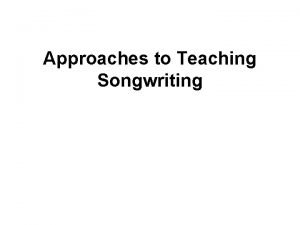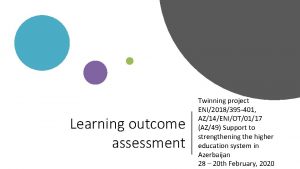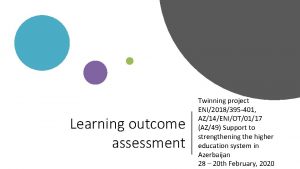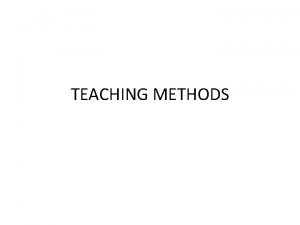Approaches to learning Learning Teaching Assessment Module 401




































- Slides: 36

Approaches to learning Learning, Teaching & Assessment Module 401 Postgraduate Certificate in Learning and Teaching in Higher Education

Aims • Provide some evidence that teaching approach influences learning approach – With variable learning/assessment effects • Overview of ideas about learning • Provide a basis for further reading • One starting point for critical reflection on practice • Needed in assignments! Note – there a lot of theories about learning!

Some opening thoughts Learning is not an agreed, nailed down phenomenon (like teaching) – gathering evidence is often complex and contested People usually have ideas about learning that may not be articulated (like teaching) Theories (or models) about learning contain concepts/beliefs The current dominant models (in the west) are individualistic and cognitive

Definition - Learning 1. Learning is a process, not a product 2. Learning is a change in knowledge, beliefs, behaviours or attitudes Takes time; especially with changes to core beliefs, behaviours, and attitudes 3. Learning is not something done to students, but something that students themselves do University of Pittsburgh Agreement that it is an active process – and teaching needs to support active engagement Constructivist Learners make their own meaning

Learning as a process 1. Learning as a quantitative increase in knowledge. Learning is acquiring information or ‘knowing a lot’. 2. Learning as memorising. Learning is storing information that can be reproduced. 3. Learning as acquiring facts, skills, and methods that can be retained and used as necessary. Note ‘possession’, unchanged _________________________________ 4. Learning as making sense or abstracting meaning. Learning involves relating parts of the subject matter to each other and to the real world. 5. Learning as interpreting and understanding reality in a different way. Learning involves comprehending the world by reinterpreting knowledge. Note ‘the personal’, change Differences between 1 -3 & 4 -5 (Saljo quoted in Ramsden 1992)

Teaching and learning Teachers adopt qualitatively different approaches to teaching Does this affect learning?

A CCSF (student centred) approach includes elements of an ITTF (teacher centred) approach, but not vice versa Arguing for a wide repertoire with the capacity to adjust to context and always with a focus on learning Prosser & Trigwell CCSF - Conceptual Change/Student-focused ITTF - Information Transmission/Teacher-focused

It’s All about Learning Success of a lecture is determined by what has been learnt – not by lecturer performance “what the student does is more important in determining what is learnt than what the teacher does” (Sheull; in Fry et al). Do we plan for learning or delivery? "The secret of teaching is to appear to have known all your life what you learned this afternoon. " - Anonymous

Three models of learning From the Carlile & Jordan article • Behaviourism • Cognitivism • Constructivism In pairs • identify the key points of theory • Identify the key implications for practice • Explain to the ‘table’ • Evaluate your own practice – Keep notes for reflective assignment

Psychological theories Led to these types of questions: • What can we discover about how individuals learn? • What are the implications of our knowledge about individual learning for classroom teaching and curriculum design? • What is going on outside the classroom which might impact upon learning outcomes? Largely survey research about students

Approaches to learning • Aimed to understand individual students' own perspectives of the situation • Rather than aiming for the perspective of an "objective" outside observer. analysed participants' approach to reading task Marton and Säljö (1976) Dominant ‘approach’ in L&T research

Deep & Surface • Identified two distinctly different approaches – deep and surface • Later a third – strategic These terms have entered the discourse of HE Note still largely focussed on the individual

Deep, surface and strategic approaches to learning NB these are Approaches only – not fixed but influenced by initial student orientation & teacher/programme orientation Surface – aim to reproduce, often unconnected facts Deep – aim is to make sense of learning, connections Strategic – aim is to pass, what does lecturer want? skilful use of surface approach, deep if needed, influenced by context See Gibbs – summary article on impacts of approaches to learning on outcomes and effects of programmes on approaches to learning

Deep Surface Approaches to Learning Adapted from Ramsden 1988; J. Pritchard, Bristol University

Surface Motive Deep fear of failure intrinsic interest narrow target, maximize Strategy rote learn meaning Achieving (strategic) achievement effective use of space and time The original Learning Process Questionnaire: Dimensions, motives and strategies In Kember et al 2004

Studies show: Course characteristics associated with surface learning Heavy workload Relatively high class contact hours An excessive amount of course material A lack of opportunity to peruse a subject in depth A lack of choice over subjects and over method of study • A threatening and anxiety provoking assessment system Gibbs 2002 p 6 • • • Of course there are other factors; note it says associated

Own course and approaches to learning • Discussion How does your course fare on the deep/surface approach? Anything you could do to change any aspect? • This discussion can be part of reflection on practice for assignment

Critique of Approaches to Learning • Any theory (wrt learning) highlights some aspects disregards others • Approaches focuses on cognitive aspects • Insufficient attention to social and cultural factors in supporting/hindering learning – How does the broader context affect learning?

Alienation and Engagement • Learning hindered by disconnection/no sense of belonging – Classmates, Teachers, Programme, Department, University, Career – What relationships exist (or not)? • How well ‘connected’ are your students to your programme? – Evidence? – How might you enhance? Case 2008

Alienation and Engagement • Increasing evidence that engagement fosters learning (achievement) – Linkage not strong, many factors at work (Carini et al 2006) • Increasing use of National Survey of Student Engagement (NSSE) – In USA & Australia, pilot in UK – Focuses on what students do and on relationships (to class etc) – i. e. includes ‘social’ influences on learning What about your students: say P/T, at home, international

Student engagement students’ cognitive investment, emotional commitment and active participation in learning (Chapman 2003) “students’ involvement with activities and conditions likely to generate high quality learning” (ACER 2008) Proposal 4: Create learning that is active, collaborative and fosters learning relationships (In Zepke & Leach 2010)

Social Constructivism • Dialogue and communication key to constructing meaning • Involves others • So: group work, collaborative learning, peer learning, PBL, discussion – Model desired practice, build trust, use interpersonal skills • Zone of Proximal Development – Learning at the next level – ‘Scaffolding’ (providing supports) so learners can move to next level – mentoring, structuring (and removing structure) so learners become more independent Carlile and Jordan (2005) Do you demonstrate these? How, evidence?

Next: • Other models • Active learning • In practice

Kolb’s experiential learning cycle Learning is founded in experience Learning moves through a 4 stage cycle and repeats 1. 2. 3. 4. Experience (either in class or outside) Review experience Draw conclusions Plan for next (similar) experience Key model, leads to: one version of learning styles, reflective questioning process, PBL, Race’s model

Experiential learning in practice • Start with an activity – practical, discussion, case study, own experiences, question, problem – PBL, inquiry based learning, clinical placements, tutorials (run ‘properly’) • Review, gather data, responses – Reflective journals on placements • Link to theory (from lecture or reading), generate patterns, derive understanding • Work out implications for next time – How can this be used, applied Do you demonstrate these? How, evidence?

Race’s model key factors underpinning successful learning Building on Kolb �Wanting – motivation: interest, enthusiasm and /or �Needing - motivation: necessity, completion �Doing – practice, trial and error �Feedback – getting reactions: self, peers, tutors �Digesting – reflection, making sense, owning the learning How would you rate your courses/teaching on these? Which get the highly rated time (i. e. your time)? Do you demonstrate these? How, evidence?

Active learning • is generally defined as any instructional method that engages students in the learning process. . . in practice active learning refers to activities that are introduced into the classroom • Students will remember more content if brief activities are introduced to the lecture. Contrast this to the prevalent content tyranny that encourages faculty to push through as much material as possible in a given session. • The best available evidence suggests that faculty should structure their courses to promote collaborative and cooperative environments Prince 2004

Making lectures more interactive A student’s informed view and an academic’s implementation • Look at the Morrow & Friel article • Analyse it for application in your area – Can you do something like this is your classes? – If so: what, how, challenges, solutions An option for L&T reflection assignment

Turning theory into practice • Use the ‘theory into practice’ summary to evaluate your programme/your teaching In what ways does your teaching practice reflect all or parts of these models of learning? • Behaviourism, Cognitive, Constructivism, Social constructivism, Kolb, Race • Knowledge of theory is useful for providing evidence to support changes to practice Knowledge of theory is essential for M level assignments (reflection on practice)! Fry et al (2007)

A case study: Improved learning in a large enrolment physics class • Compared learning achieved using two different instructional approaches • Measured learning of a specific set of topics and objectives – 3 hours of traditional lecture; experienced highly rated instructor – 3 hours of instruction; trained but inexperienced instructor using instruction based on research in cognitive psychology and physics education. • Comparison between two large sections (N = 267 and N = 271) of an introductory undergraduate physics course Found increased student attendance, higher engagement, and more than twice the learning in the section taught using research-based instruction

The research based ‘instruction’ • Pre-class reading assignments, pre-class reading quizzes, in-class clicker questions, student-student discussion, small-group active learning tasks, and targeted in-class instructor feedback • Before each of the three 50 -min classes, students were assigned a three- or four-page reading, and they completed a short true/false online quiz on the reading • To avoid student resistance, at the beginning of the first class, several minutes were used to explain to students why the material was being taught this way and how research showed that this approach would increase their learning Deslauriers, Schelew, Wieman 2011

Good teaching Is making most students use the higher level cognitive processes that the more academic students use spontaneously https: //www. youtube. com/watch? v=w 6 rx-GBBw. Vg But see https: //www. youtube. com/watch? v=i. MZA 80 Xp. P 6 Y first

Bibliography Biggs J (2003) Teaching for quality learning at university Bloom’s taxonomy http: //www. ntlf. com/html/lib/suppmat/84 taxonomy. htm Carini et al 2006 Student Engagement and Student Learning: Testing the Linkages 2006 Faculty Development Associates http: //www. developfaculty. com/online/index. html Fry et al (2003) Handbook for teaching and learning in Higher Education: Enhancing academic practice Carlile, O. and Jordan, A. (2005) It works in practice but will it work in theory? The theoretical underpinnings of pedagogy http: //www. aishe. org/readings/2005 -1/collection. pdf Deslauriers, Schelew & Wieman (2011) Improved Learning in a Large-Enrollment Physics Class Murphy E (1997) Constructivism: From Philosophy to practice http: //www. stemnet. nf. ca/%7 Eelmurphy/emurphy/cle. html Thanks to Dr Jane Pritchard, University of Bristol

Bibliography Kember, Biggs and Leung (2004). Examining the multidimensionality of approaches to learning through the development of a revised version of the Learning Process Questionnaire Morrow, L. & Friel, N. (n. d. ) Making lectures more interactive – a student’s informed view and an academic’s implementation http: //www. gla. ac. uk/media_148140_en. pdf Prince 2004 Does active learning work- A review of the research Prosser M and Trigwell K (1999). Understanding learning and teaching: The experience in HE Ramsden, P. (1992) Learning to Teach in Higher Education Smith, M. (2003) Learning theory http: //www. infed. org/biblio/b-learn. htm TLRP Effective learning and teaching in UK higher education HEA. pdf Trigwell , K. (2006) Presentation at Lancaster University Trigwell, Prosser & Waterhouse (1999) Relations between teachers’ approaches to teaching and students’ approaches to learning. Higher Education 37 p 57=70 University of Pittsburgh http: //www. cidde. pitt. edu/ta-handbook/teaching-and-learning -principles/definition-learning

Enhancing learning in traditional lectures • Clear overview, including how it fits with other lectures, and give learning outcomes • Briefing – type of lecture and what you expect them to do • Flagging – what you are doing and why • Repetition and highlighting of key points – Tell them what they should know & note • Visual aids • Effective summary and directions for what next

 Approaches to teaching and learning ib
Approaches to teaching and learning ib Teaching and assessment of grammar module 1
Teaching and assessment of grammar module 1 Characteristics of portfolio assessment
Characteristics of portfolio assessment Portfolio assessment matches assessment to teaching
Portfolio assessment matches assessment to teaching Module 2 today's psychology and its approaches
Module 2 today's psychology and its approaches Assessment: the bridge between teaching and learning
Assessment: the bridge between teaching and learning Pedagogical approaches to teaching math
Pedagogical approaches to teaching math Inductive method
Inductive method Approaches to assessment
Approaches to assessment Cost approaches and techniques in supplier assessment
Cost approaches and techniques in supplier assessment C device module module 1
C device module module 1 Lsp 401
Lsp 401 Svartpilen 401 dyno
Svartpilen 401 dyno Cse401
Cse401 Ge 401
Ge 401 Where should charts with food code 3-401 be displayed
Where should charts with food code 3-401 be displayed Eng m 401
Eng m 401 Clase 401
Clase 401 401 branard street houston tx
401 branard street houston tx Bmb 401
Bmb 401 Comm 401
Comm 401 401 relevance
401 relevance Hinário adventista 401
Hinário adventista 401 Hd-wp-4k-401-c
Hd-wp-4k-401-c Quantas prendas a turma 403 já levou para a escola
Quantas prendas a turma 403 já levou para a escola Class 600 stitch
Class 600 stitch Tabel clasa miilor
Tabel clasa miilor Herpesviridae
Herpesviridae Stitch class 406
Stitch class 406 Jul 401 english
Jul 401 english Ir401 form
Ir401 form Melinex polyester films
Melinex polyester films Airport mix asphalt
Airport mix asphalt Csc 401
Csc 401 Concurrent engineering examples boeing 777
Concurrent engineering examples boeing 777 Ce-401
Ce-401 Ce-401
Ce-401
